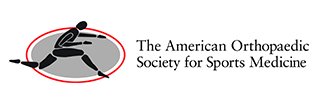Rotator Cuff Repair
The intent of this protocol is to provide the therapist and patient with guidelines for the post-operative rehabilitation course after arthroscopic rotator cuff repair. This protocol is based on a review of the best available scientific studies regarding shoulder rehabilitation. It is by no means intended to serve as a substitute for one’s clinical decision making regarding the progression of a patient’s post-operative course. It should serve as a guideline based on the individual’s physical exam/findings, progress to date, and the absence of post-operative complications. If the therapist requires assistance in the progression of a post-operative patient they should consult with Dr. Fullick.
Progression to the next phase based on Clinical Criteria and/or Timeframes as appropriate.
Phase I – Immediate Post Surgical (Weeks 1-6):
Goals:
- Maintain / protect integrity of repair
- Gradually increase passive range of motion (PROM)
- Diminish pain and inflammation
- Prevent muscular inhibition
- Become independent with activities of daily living with modifications
Precautions:
- Maintain arm in abduction sling / brace, remove only for exercise
- No active range of motion (AROM) of shoulder
- No lifting of objects
- No shoulder motion behind back
- No excessive stretching or sudden movements
- No supporting of any weight
- No lifting of body weight by hands
- Keep incisions clean and dry Criteria for progression to the next phase (II):
- Passive forward flexion to at least 125 degrees
- Passive external rotation (ER) in scapular plane to at least 75 degrees
- Passive internal rotation (IR) in scapular plane to at least 75 degrees
- Passive Abduction to at least 90 degrees in the scapular plane
DAYS 1 TO 6:
- Abduction brace/sling
- Pendulum exercises
- Finger, wrist, and elbow AROM
- Begin scapula musculature isometrics / sets; cervical ROM
- Cryotherapy for pain and inflammation -Day 1-2: as much as possible (20 minutes of every hour)
- Day 3-6: post activity, or for pain
- Sleeping in abduction sling
- Patient Education: posture, joint protection, positioning, hygiene, etc.
DAYS 7 TO 28:
- Continue use of abduction sling / brace
- Pendulum exercises
- Begin passive ROM to tolerance (these should be done supine and should be pain free)
- Flexion to 90 degrees
- ER in scapular plane to at least 35 degrees
- IR to body/chest
- Continue Elbow, wrist, and finger AROM / resisted
- Cryotherapy as needed for pain control and inflammation
- May resume general conditioning program – walking, stationary bicycle, etc.
- Aquatherapy / pool therapy may begin at 3 weeks postop
Phase II – Protection / Active motion (weeks 5 - 10):
Goals:
- Allow healing of soft tissue
- Do not overstress healing tissue
- Gradually restore full passive ROM (week 4-5)
- Decrease pain and inflammation
Precautions:
- No lifting
- No supporting of body weight by hands and arms
- No sudden jerking motions
- No excessive behind the back movements
- Avoid upper extremity bike or upper extremity ergometer at all times.
Criteria for progression to the next phase (III): Full active range of motion
WEEK 5-6:
- Continue use of sling/brace full time until end of week 4
- Between weeks 4 and 6 may use sling/brace for comfort only
- Discontinue sling/ brace at end of week 6
- Initiate active assisted range of motion (AAROM) flexion in supine position
- Progressive passive ROM until approximately Full ROM at Week 4-5. -Gentle Scapular/glenohumeral
- joint mobilization as indicated to regain full passive ROM
- Initiate prone rowing to neutral arm position
- Continue cryotherapy as needed
- May use heat prior to ROM exercises
- May use pool (aquatherapy) for light active ROM exercises
- Ice after exercise
Weeks 6-8
- Continue active and active assisted ROM and stretching exercises
- Begin rotator cuff isometrics
- Continue periscapular exercises
- Initiate active ROM exercises
- flexion scapular plane
- abduction
- external rotation
- internal rotation
Phase III – Early strengthening (weeks 10-14):
Goals:
- Full active ROM (week 10-12)
- Maintain full passive ROM
- Dynamic shoulder stability
- Gradual restoration of shoulder strength, power, and endurance
- Optimize neuromuscular control
- Gradual return to functional activities
Precautions:
- No heavy lifting of objects (no heavier than 5 lbs.)
- No sudden lifting or pushing activities
- No sudden jerking motions
- No overhead lifting
- Avoid upper extremity bike or upper extremity ergometer at all times.
Criteria for progression to the next phase (IV):
- Able to tolerate the progression to low-level functional activities
- Demonstrates return of strength/dynamic shoulder stability
- Re-establish dynamic shoulder stability
- Demonstrates adequate strength and dynamic stability for progression to higher demanding work/sport specific activities.
WEEK 10:
- Continue stretching and passive ROM (as needed)
- Dynamic stabilization exercises
- Initiate strengthening program
- External rotation (ER)/Internal rotation (IR) with therabands/sport cord/tubing
- ER side-lying (lateral decubitus)
- Full can in scapular plane* (avoid empty can abduction exercises at all times)
- Prone rowing
- Prone horizontal abduction
- Prone extension
- Elbow flexion
- Elbow extension
Patient must be able to elevate arm without shoulder or scapular hiking before initiating isotonics; if unable, continue glenohumeral joint exercises
WEEK 12:
- Continue all exercise listed above
- Initiate light functional activities as Dr. Millett permits
WEEK 14:
- Continue all exercise listed above
- Progress to fundamental shoulder exercises
Phase IV – Advanced strengthening (weeks 16-22):
Goals:
- Maintain full non-painful active ROM
- Advance conditioning exercises for enhanced functional use
- Improve muscular strength, power, and endurance
- Gradual return to full functional activities
WEEK 16:
- Continue ROM and self-capsular stretching for ROM maintenance
- Continue progression of strengthening
- Advance proprioceptive, neuromuscular activities
- Light sports (golf chipping/putting, tennis ground strokes), if doing well
WEEK 20:
- Continue strengthening and stretching
- Continue stretching, if motion is tight
- May initiate interval sport program (i.e. golf, doubles tennis, etc.), if appropriate.






